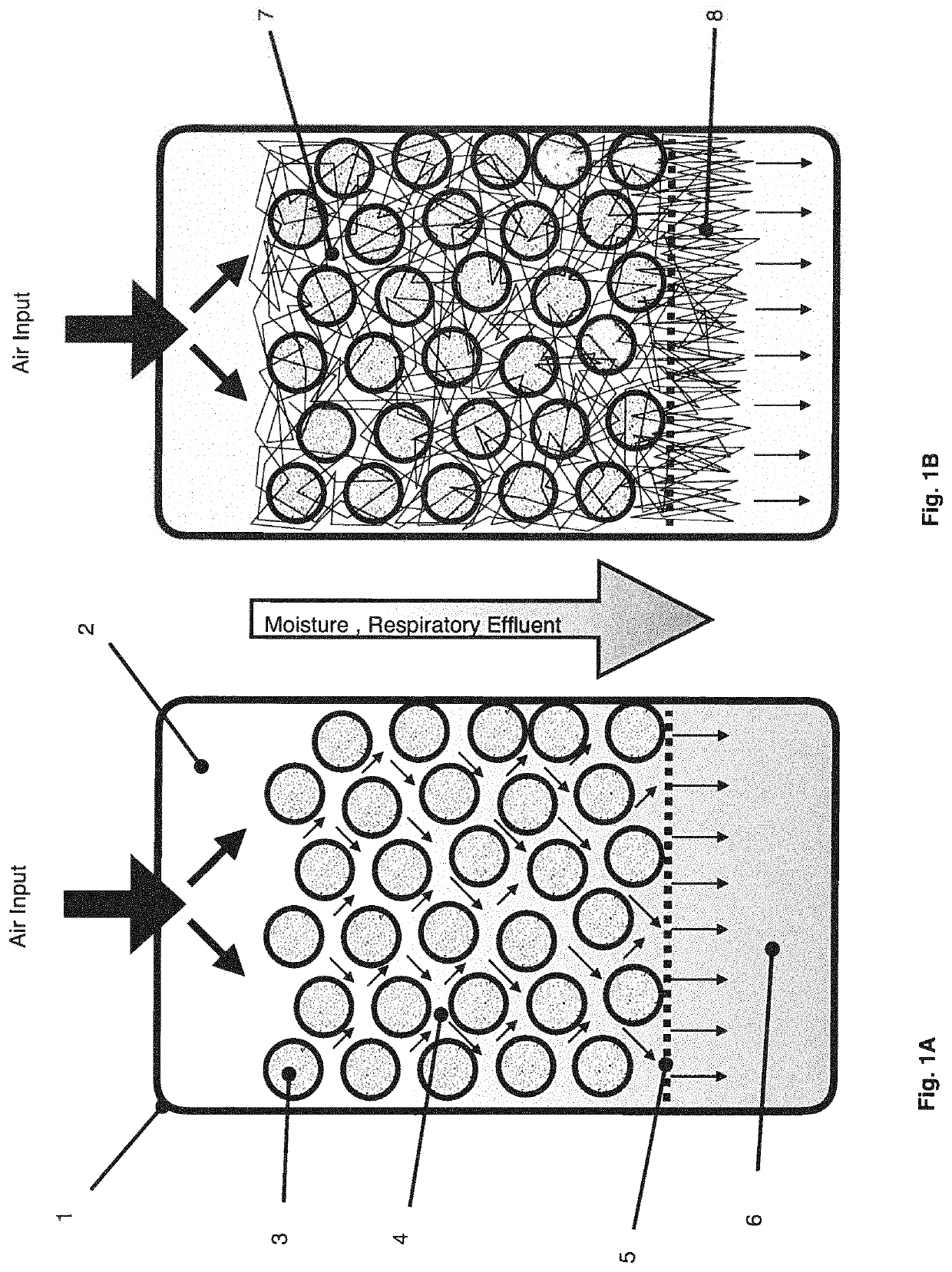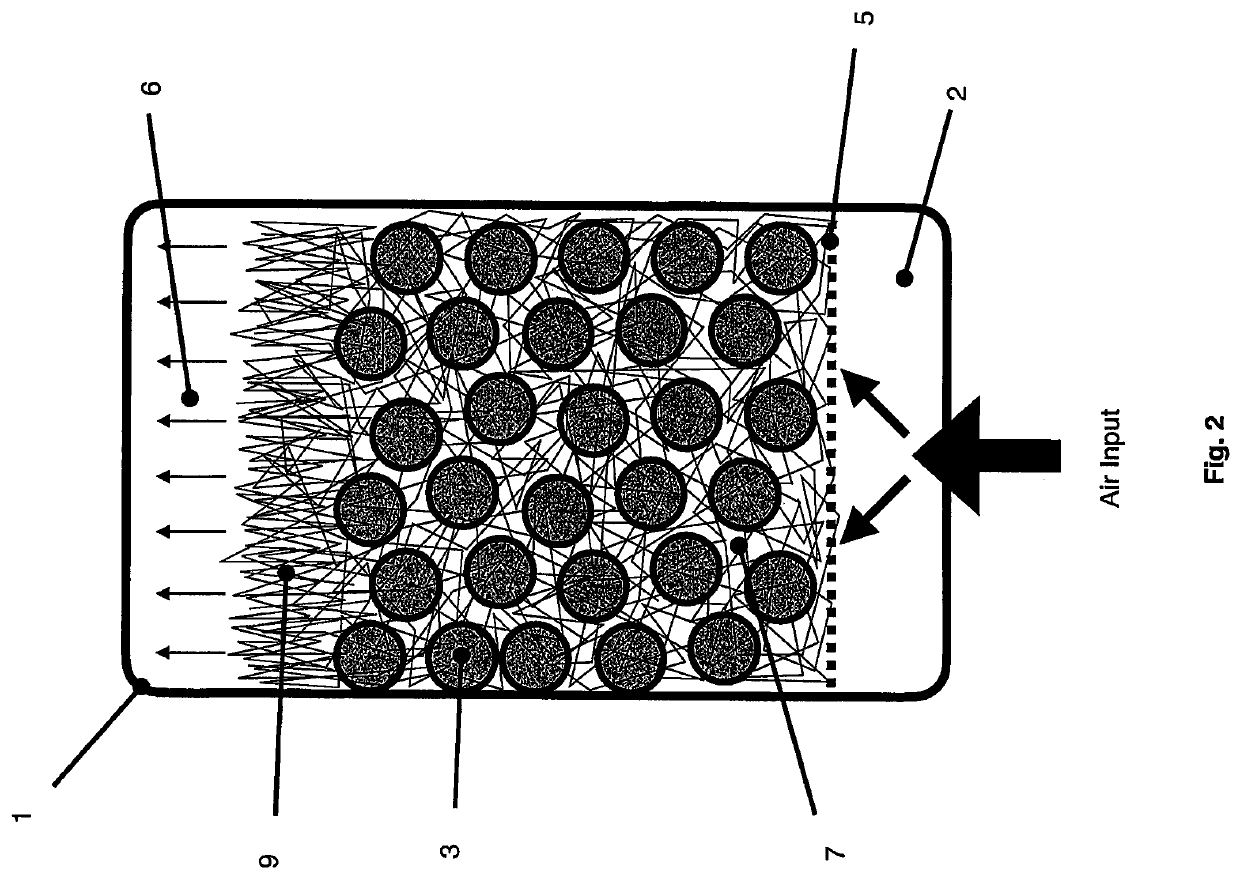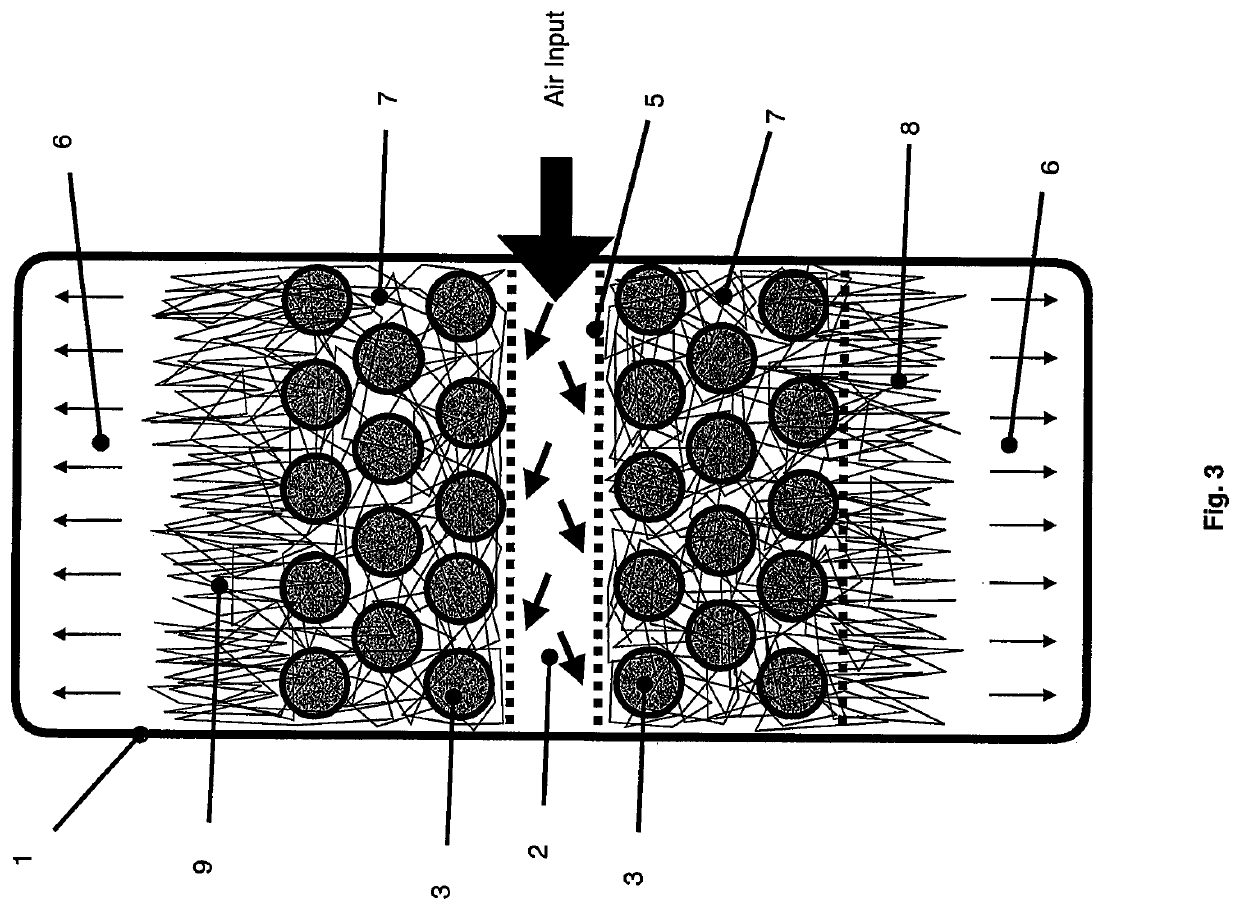Bioreactor Paradigm for the Production of Secondary extra-Particle Hyphal Matrices
a bioreactor and hyphal matric technology, applied in bioreactors/fermenters, specific use bioreactors, plant cultivation, etc., can solve the problems of increasing morphological heterogeneity and limiting the large-scale tissue developmen
- Summary
- Abstract
- Description
- Claims
- Application Information
AI Technical Summary
Benefits of technology
Problems solved by technology
Method used
Image
Examples
example 2
dure of Example 1, Modifying EPM Structural Characteristics by Specific Modification of Input Temperature and Airflow Conditions
[0058]1. Example 1 steps 1 and 2.[0059]2. Per Example 2 step 3, with average temperature modified to 90° F., and airflow rate modified to 1.2 volumes per bioreactor volume per minute.[0060]3. Example 1 step 4.[0061]4. Example 1 step 5, with EPM morphology modified to a cell volume density of 4.5× that of IPM, a directional coherency of 2.6× that of IPM, and average hyphal strand thickness of 1.29× that of IPM.[0062]5. Example 1 step 6.
[0063]Referring to FIG. 3, wherein like reference characters indicate like parts as above, the vessel 1 has a pair of permeable partitions 5 at mid-height to form a head space 2 therebetween and a pair of chambers for loading of two separate sections of the substrate of inoculated elements 3 therein.
[0064]In operation, air is input into the head-space 2 in the center of the bioreactor vessel 1 defined by the permeable partitio...
example 3
dure of Example 1, Modifying EPM Structural Characteristics by Introduction of an Aromatic Compound into the Input Air
[0066]1. Example 1 steps 1 and 2.[0067]2. Example 1 step 3, with terpene introduced into the pre-conditioned air prior to introduction to the inoculated substrate.[0068]3. Example 1 step 4.[0069]4. Example 1 step 5, wherein the EPM and / or IPM is of reduced density and greater directional coherency as a function of the terpene exposure during IPM / EPM development.[0070]5. Example 1 step 6.
[0071]Referring to FIG. 4, wherein like reference characters indicate like parts as above, the orientation of the vessel 1 of FIG. 3 is adjusted so that airflow, the gradient of respiratory effluent, and EPM extension occurs in the horizontal direction rather than the vertical direction.
[0072]Referring to FIG. 5, wherein like reference characters indicate like parts as above, the vessel 1 is a 4×4×4 ft Type II packed-bed actively aerated bioreactor of cubic shape.
[0073]The following e...
example 4
n of EPM Using a 4×4×4 ft Type II Packed-Bed Actively Aerated Bioreactor
[0074]1. The vessel 1 is a 4×4×4 ft container.[0075]2. The permeable partition 5 is placed at a depth of 3 ft, allowing for 1 ft of empty volume 6 below the permeable partition 5.[0076]3. Inoculated substrate elements 3 are loaded in the top 3 ft of the vessel 1.[0077]4. Air is fed into the top (head-space) of the bioreactor vessel and through the particle matrix per Example 1 steps 3. and 4.[0078]5. IPM 7 develops around and between substrate elements 3.[0079]6. EPM 8 extends in a positively gravitropic orientation into the bottom void space 6 to a given target thickness, e.g. a thickness of up to 12 inches as a function of incubation time.[0080]7. EPM is separated from the permeable partition 5 and post-processed per Example 1 step 6.
[0081]Referring to FIG. 6, wherein like reference characters indicate like parts as above, the vessel 1 may be made with a base that defines a void space 6 of a selected geometric...
PUM
| Property | Measurement | Unit |
|---|---|---|
| temperature | aaaaa | aaaaa |
| density | aaaaa | aaaaa |
| temperature | aaaaa | aaaaa |
Abstract
Description
Claims
Application Information
 Login to View More
Login to View More - R&D
- Intellectual Property
- Life Sciences
- Materials
- Tech Scout
- Unparalleled Data Quality
- Higher Quality Content
- 60% Fewer Hallucinations
Browse by: Latest US Patents, China's latest patents, Technical Efficacy Thesaurus, Application Domain, Technology Topic, Popular Technical Reports.
© 2025 PatSnap. All rights reserved.Legal|Privacy policy|Modern Slavery Act Transparency Statement|Sitemap|About US| Contact US: help@patsnap.com



